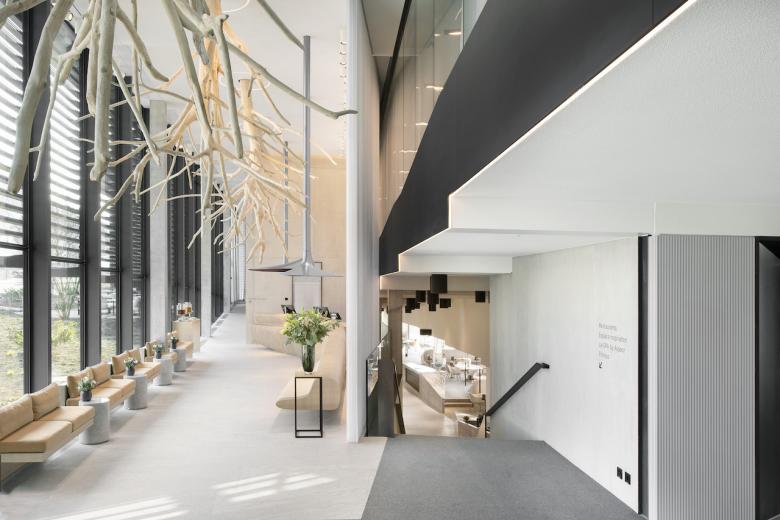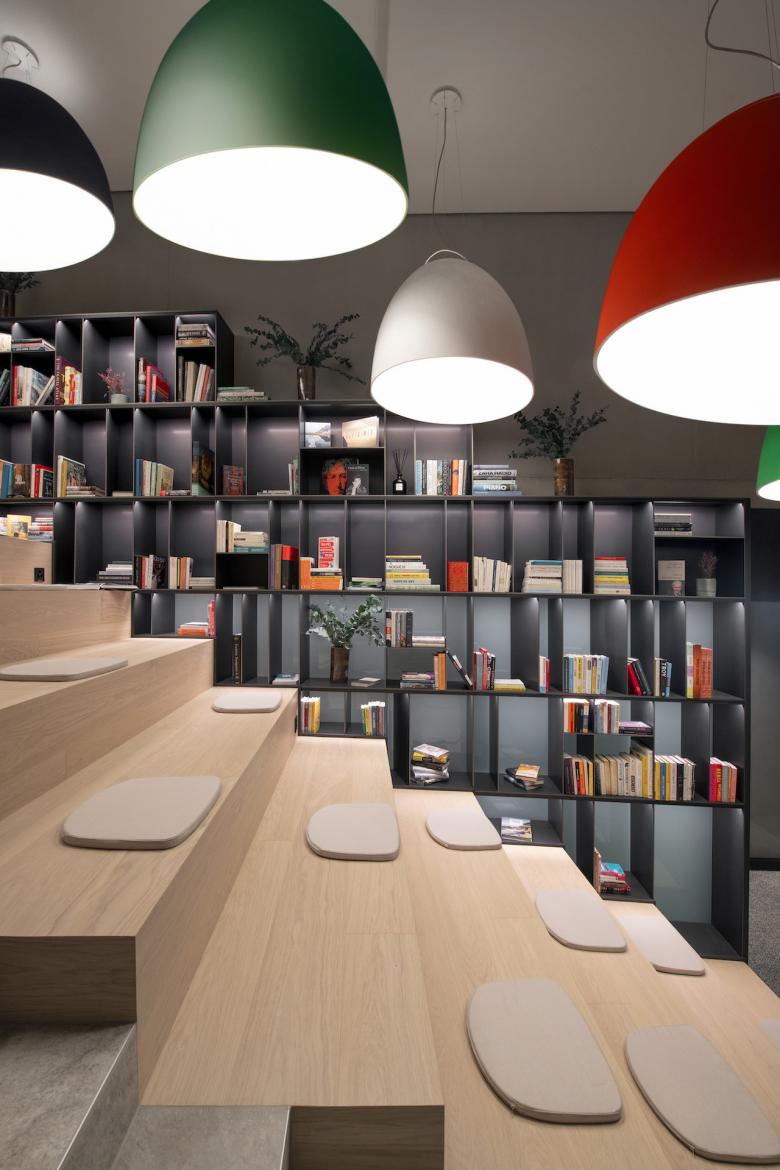BIG – Bjarke Ingels Group has designed a hotel for watch enthusiasts in the canton of Vaud in western Switzerland, adjacent to the museum BIG previously built for watchmaker Audemars Piguet. Ulf Meyer visited and sent us his impressions.
In Salvador Dalí’s famous surrealistic paintings, watches are often depicted as soft, hanging over tree branches like wet towels, time dripping from their edges. At the new hotel in Le Brassus, in Vallée de Joux, a valley of the Jura Mountains in western Switzerland known as “Watch Valley,” time is translated by BIG – Bjarke Ingels Group into another shape: a constant slope. The zig-zag building suggests that when you are born you have a lot of time, but for the rest of your life you are slowly but surely gliding down the ramp of time.
At the same time, the hotel is using the long-established architectural ideas of folding and the continuous landscape, where building blends into its site and terrain. The hotel rooms are oriented toward a hilly meadow and the Risoud Forest in the distance through great sheets of glass, turning the occasional farm vehicle doing its turns into an aesthetic sensation. The smart hotel guests come from big cities around the world, stopping by the famous Swiss watchmaker’s nearby visitor center to pick up their precious new timepiece. Watches remain the most socially acceptable, in-your-face way of using jewelry to display wealth — for men, at least.
The German auto industry started the trend of fancy “customer experience centers” that translate their corporate designs into corporate architecture, aiming to further differentiate the otherwise look-alike brands from each other. The Autostadt in Wolfsburg and later the BMW Welt in Munich were the first big scale examples of such brand architecture. Now, the watch making industry is finding ways to attract buyers to the remote valleys of Switzerland.
BIG are known for turning architectural diagrams into often geometrically twisted buildings —Hôtel des Horlogers is no exception. The hotel rooms are arranged along a promenade architecturale that bypasses all rooms and is continued as a pedestrian path above the green roofs of the lower floors. Unfortunately, this beautiful idea was lost in the executed building; security concerns made it impossible to allow the general public to walk across the guest wings. Nevertheless, watchmaking, architecture and nature are zigzagged together in the building’s long ramp. The luxury watchmaker that commissioned the new hotel also had BIG design the neighboring Musée Atelier Audemars Piguet, completed in 2020. There, the spiral shape was chosen to signify the actual process of watch making.
The Z-shaped hotel is composed of five ramps in the landscape. The tilting slabs gradually descend towards the valley, a reference to the winding journey watchmakers used to take to bring their goods to the market — the Chemin des Horlogers, a historic route from the Vallée to Geneva. Now, the opposite: the buyers make the trip to the little factories.
From the street, the hotel looks like a single slab, with the four lower floors tucked into the landscape below. Wooden louvers provide shading. The wooden slabs step down from the road to the valley. The interiors, designed by AUM Pierre Minassian from Lyon, France, draw inspiration from the indoor/outdoor vernacular. From the lobby, the design becomes more sinuous and rustic, with glass, concrete, stone, and wood. One level below are a bar, spa, conference center, and two restaurants; the path terminates in an in-house art library for hotel guests. The five slabs form a ramping corridor as a continuous interior path. Some 86 photovoltaic panels on the roof provide part of the building’s electric energy, while wood is used for heating the building. The hotel earned the Swiss Minergie-ECO label for low-energy buildings.
While the French concepts of haute cuisine and haute couture are now worldwide terms for savoir vivre, the haute horlogerie — or high art of watchmaking — finds a new architectural expression with this boutique 50-room hotel. It might just start a renaissance of luxury tourism in one of Switzerland’s sleepiest and most remote regions. Time seems to be on their side: Inside and out, the hotel’s design represents the precision, refinement, and attention to detail that, without which, an industry focused on time would just drip away.
Location: Le Brassus, Switzerland
Client: Manufacture d'Horlogerie Audemars Piguet SA, Le Brassus
Design Architect: BIG – Bjarke Ingels Group
Local Architect: CCHE Lausanne SA
Interior Designer: AUM Pierre Minassian
Gross Floor Area: 6,300 m²










